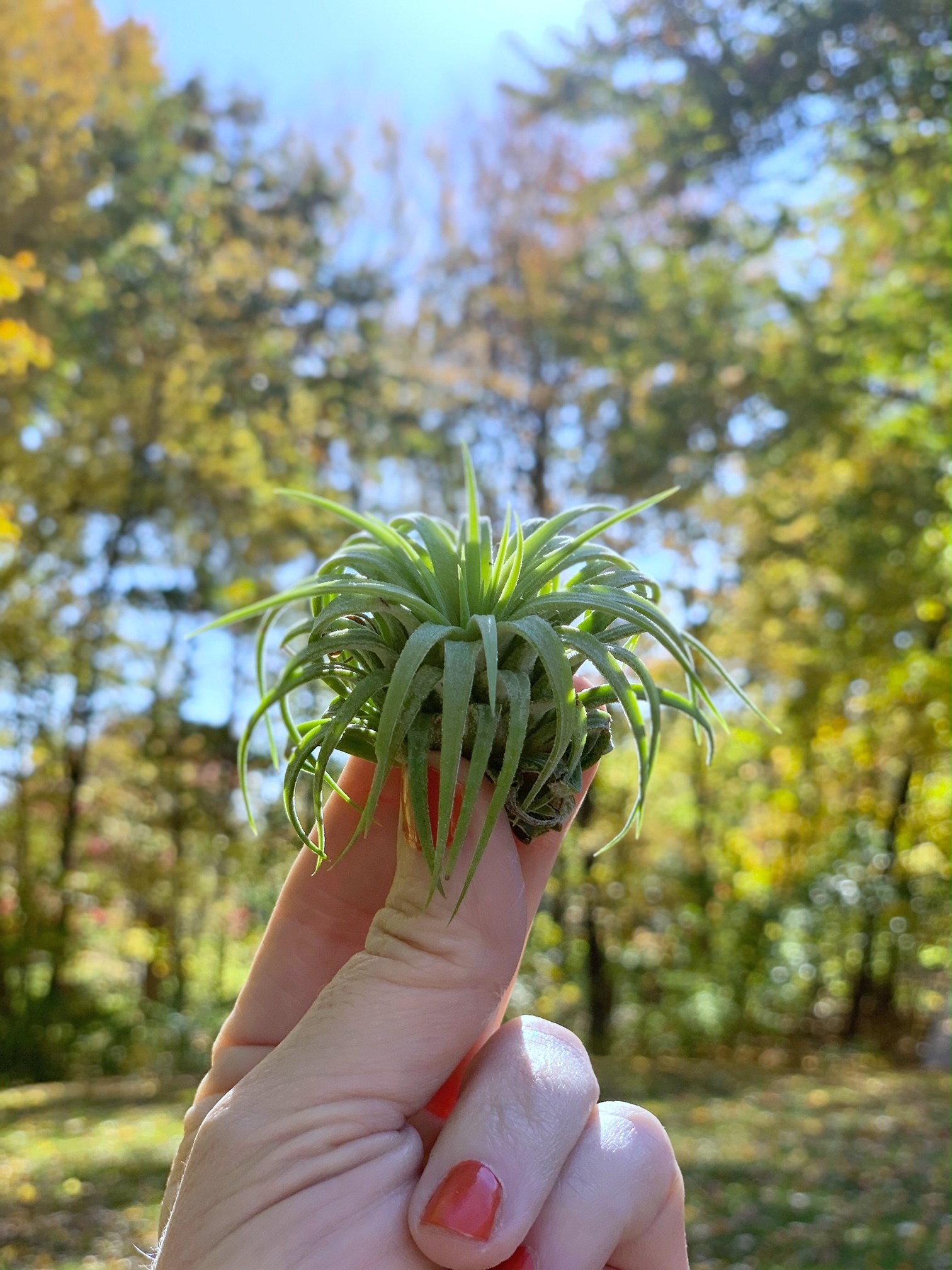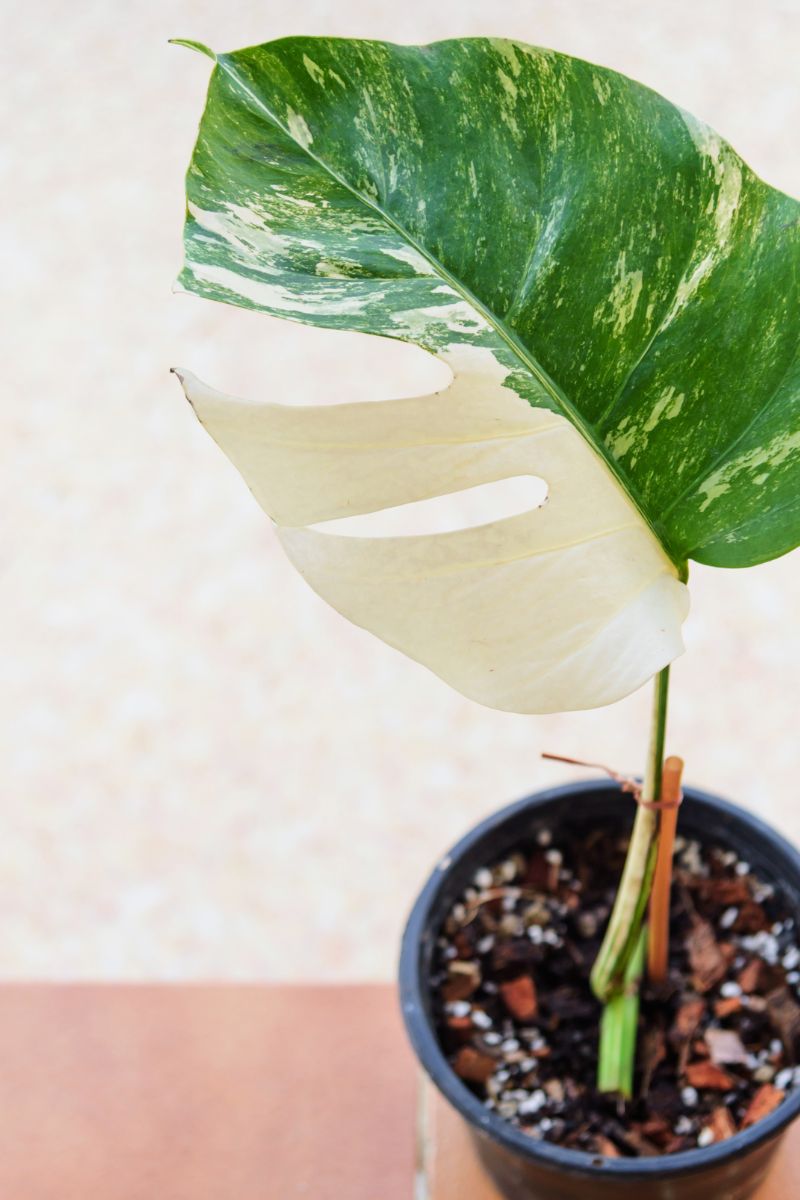I’m calling Monstera the coolest plant of 2024! Seriously, have you seen those lush, fenestrated tropical leaves? They’re like green umbrellas, ready to transport you to a rainforest paradise right in your living room. But here’s the thing – to keep your Monstera looking Instagram-worthy, you’ve gotta get down and dirty with its soil needs.
In this post, we’ll explore the fascinating world of Monstera soil. Whether you prefer ready-made commercial options or enjoy mixing up your own DIY concoctions, we’ve got you covered. It’s not just about giving your plant a nice place to call home – it’s about creating the perfect environment for it to thrive. Trust me, once you understand what makes Monstera soil tick, you’ll be amazed at the difference it makes in your plant’s health and happiness.
So, grab your gardening gear and let’s get down to business. We’re about to unlock the secrets to a happy, thriving Monstera.
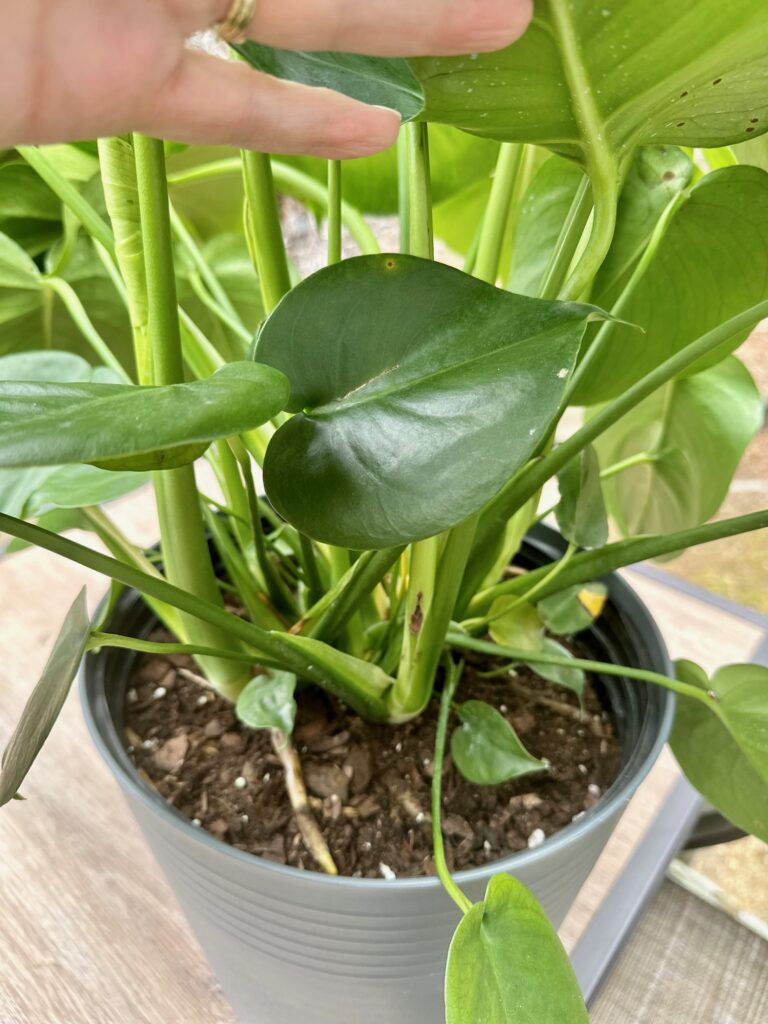
Content may contain affiliate links. When you shop the links, we receive a small commission at no cost to you. Thanks for supporting my small business.
Understanding Monstera Soil Requirements
Understanding Monstera soil requirements is key to keeping these plants happy and healthy. You see, Monstera plants don’t like their roots sitting in water for too long. It can lead to root rot, which is basically a death sentence for your plant. To avoid this, you’ll want to use well-draining soil. This means the water can flow through it easily, without drowning your Monstera. The secret sauce? Perlite, coarse sand, and peat moss. These three ingredients work together to create the perfect soil mix. Perlite helps with drainage, coarse sand prevents waterlogging, and peat moss retains just the right amount of moisture to avoid Monstera wet feet!!
Think of it like finding the perfect recipe for your Monstera’s roots – get the ingredients right, and your plant will thank you with lush, green growth.
As we’ve discussed previously here and on our sister site, certain plants we’ve explored that also thrive in well-draining, sandy soil conditions: Aloe , Rosemary , Lavender , Succulents.

Nutrient Management for Monstera Soil
Essential Nutrients for Monstera Soil
Monstera plants have specific nutrient requirements crucial for their health and growth. Among these, nitrogen, phosphorus, and potassium1 play pivotal roles. Let me break this down.
Nitrogen acts as a primary component in chlorophyll, the pigment responsible for photosynthesis.2 A deficiency in nitrogen can manifest as yellowing leaves, stunted growth, and overall poor plant health.
Phosphorus is essential for energy transfer within the plant, aiding in root development, flower formation, and overall growth. Insufficient phosphorus can lead to weak stems, reduced flowering, and poor fruit development. Yes, Monstera bears fruit!
Potassium regulates water uptake and enzyme activation in plants, contributing to disease resistance, root development, and overall vigor. Without adequate potassium, Monstera plants may exhibit leaf curling, browning of leaf edges, and reduced fruiting.
Organic Matter for Monstera Soil Enrichment
To ensure your Monstera soil remains nutrient-rich, incorporating organic matter is key. Compost and well-rotted manure are excellent sources of organic nutrients, providing essential minerals and improving soil structure.
Compost, derived from decomposed organic matter, releases nutrients slowly over time, promoting microbial activity and enhancing soil fertility. Well-rotted manure, rich in nitrogen, phosphorus, and potassium, offers immediate nutrition to plants while improving soil texture and moisture retention.
Regular Fertilization
In addition to organic matter, regular fertilization is essential for maintaining optimal soil nutrient levels. Gentle liquid fertilizers, specifically formulated for Monstera plants, provide a balanced blend of essential nutrients to support vigorous growth and development.
By incorporating these nutrient management practices into your Monstera care routine, you can ensure your plant receives the nourishment it needs to thrive and flourish.
Good To Know: Initially, the potting mix you brought your Monstera home in provides essential nutrients for its growth. However, within six months to a year, these nutrients become depleted, leaving the plant deficient. This is when fertilizing becomes crucial to replenish the soil and support continued healthy growth.

Maintaining pH Balance for Monstera Soil
The pH balance of soil3 plays a critical role in the overall health and vitality of Monstera plants. This often-overlooked aspect can significantly impact nutrient uptake and plant growth.
pH levels influence the availability of essential nutrients in the soil. For Monstera plants, maintaining a pH range between 5.5 and 7 is optimal. Soil pH outside this range can hinder the plant’s ability to absorb nutrients efficiently, leading to nutrient deficiencies or toxicities.
Testing and Adjusting Soil Acidity
To best way to ensure your Monstera soil remains within the ideal pH range is periodic testing. pH testing kits, readily available at garden centers or online, provide a simple and effective way to monitor soil acidity levels.
Just like adding sugar or lemon to your tea, these amendments help fine-tune the soil pH, ensuring optimal conditions for Monstera growth. By maintaining the right pH balance, you can maximize nutrient availability and support the overall well-being of your Monstera plant.
Tip: If the pH test reveals that your soil is too acidic (below 5.5), adding lime can help raise the pH and restore balance. Conversely, if the soil is too alkaline (above 7), sulfur can be added to lower the ph level. Think of it as adjusting the flavor of your tea to achieve that perfect balance.

Choosing the Best Soil Options for Monstera Plants
When it comes to soil options for your Monstera, there’s no one-size-fits-all solution. It’s all about finding the right mix that caters to your plant’s specific needs. Let’s explore some options to help you get started on the right foot.
Ready-Made Potting Mixes:
For those looking for convenience, ready-made potting mixes can be a great option. Brands like Premium Monstera Potting Soil and Miracle-Gro Moisture Control Potting Mix offer well-balanced blends designed to meet the needs of Monstera plants. These mixes typically provide the perfect balance of drainage, water retention, and nutrient content, making them ideal for novice and experienced gardeners alike.
DIY Soil Recipes:
If you prefer a hands-on approach, crafting your own soil mix can be both rewarding and customizable. Experiment with combinations of potting soil, perlite, coarse sand, and organic matter like compost or well-rotted manure to create a mix that suits your Monstera’s unique requirements. There’s no one right recipe, so don’t be afraid to get creative and tailor the mix to your plant’s preferences.
Alternative Soil Mediums:
For the adventurous gardener willing to think outside the box, alternative soil mediums like Lightweight Expanded Clay Aggregate (LECA)4 offer intriguing possibilities. LECA provides excellent drainage and aeration, making it a suitable option for Monstera plants that prefer a more unconventional growing environment.
Special Considerations for Epiphytic Varieties:
If you’re caring for epiphytic Monstera varieties like the Monstera Peru, traditional soil mixes may not be the best fit. These plants thrive in a mix of coco coir, orchid bark, and perlite, mimicking their natural habitat. By tailoring your soil mix to suit the specific needs of your Monstera variety, you can ensure optimal growth and health for your plant.
Ultimately, the best soil option for your Monstera depends on factors like your gardening style, your plant’s preferences, and your willingness to experiment. Whether you opt for a ready-made mix, a DIY creation, or an alternative medium, the key is to provide a nurturing environment that supports your Monstera’s growth and well-being.

Soil Preparation and Maintenance for Monstera Plants
When it comes to repotting your Monstera, proper soil preparation is key to ensuring a smooth transition and continued growth. Here’s a step-by-step guide to help you prepare and maintain your Monstera’s soil for optimal health and vitality.
Preparing the Soil for Repotting:
Before you begin repotting your Monstera, it’s essential to prepare the soil to create a conducive environment for root growth. Start by watering your Monstera a couple of days before the repotting process. This helps hydrate the plant and reduces stress during the transition.
Carefully remove the plant from its current pot, taking care not to damage the roots. If the root ball is compacted, gently loosen it with your hands or a tool like a knife to encourage healthy root growth.
Once the plant is out of the pot, massage the roots lightly to untangle them and promote their spread in the new soil mix.
Prepare the new pot by filling it with a layer of soil mix, ensuring that the top of the root ball sits about half an inch below the rim of the pot.
Place the plant in the center of the pot and fill in around the root ball with more soil mix, pressing gently to secure the plant in place.
Finish by adding a top dressing of worm compost to provide your Monstera with a nutrient boost right from the start.

Maintaining the Soil:
After repotting your Monstera, it’s crucial to maintain the soil to support healthy growth and development. Start by watering the plant thoroughly to help settle the soil around the roots.
Monitor the moisture level in the soil regularly, aiming to keep it lightly moist but not waterlogged. Allow the soil to dry out slightly between waterings to prevent overwatering, which can lead to root rot.
Rotate your Monstera periodically to ensure even growth on all sides and promote balanced development.
Dust the leaves regularly to remove any debris and allow for efficient photosynthesis, which is essential for overall plant health.
Troubleshooting Soil-Related Issues:
Keep an eye out for common soil-related issues like compacted soil, drainage problems, and nutrient deficiencies, which can hinder your Monstera’s growth and vitality.
If you notice signs of compacted soil, such as slow drainage or water pooling on the surface, consider aerating the soil by gently loosening it with a fork or adding perlite to improve drainage.
Address drainage problems promptly to prevent waterlogged soil, which can lead to root rot and other issues. Ensure that your pot has proper drainage holes and consider using a well-draining soil mix to promote healthy root development.
If you suspect nutrient deficiencies, such as yellowing leaves or stunted growth, consider supplementing your Monstera’s soil with organic matter like compost or well-rotted manure to provide essential nutrients.
By following these steps for soil preparation and maintenance, you can create an optimal growing environment for your Monstera and ensure its continued health and vitality for years to come.
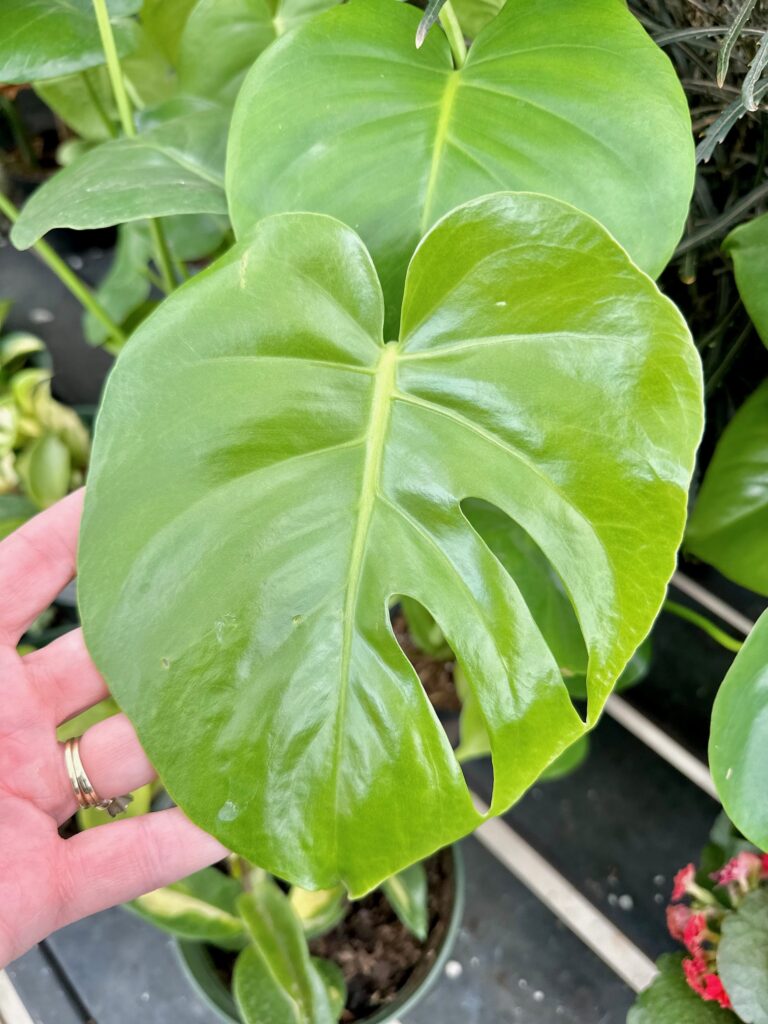
Mixing Your Own Soil Mix for Monstera Plants
Creating your own soil mix for Monstera plants allows you to tailor the blend to meet your plant’s specific needs. Here’s my approach to preparing a homemade soil mix that promotes healthy growth and provides essential nutrients for your Monstera:
Ingredients:
- Potting soil (e.g., Ocean Forest or Happy Frog)
- Coco fiber
- Coco chips (similar to orchid bark)
- Compost
- Worm compost (for top dressing)
Instructions:
- Gather Your Ingredients
Collect all the ingredients needed to create your soil mix. You’ll need potting soil, coco fiber, coco chips, compost, and worm compost.
- Measure and Mix
In a large container or wheelbarrow, combine equal parts potting soil and coco fiber. The potting soil provides a base for the mix, while the coco fiber helps improve drainage and aeration. Next, add a few handfuls of coco chips to the mixture. Coco chips act as a substitute for orchid bark, helping to aerate the soil and promote root health.
- Incorporate Compost
Mix in a generous amount of compost to enrich the soil with organic matter and essential nutrients. Compost helps improve soil structure, moisture retention, and provides a slow-release source of nutrients for your Monstera.
- Top Dressing with Worm Compost
Once your soil mix is thoroughly blended, add a 1/4 to 1/2 inch layer of worm compost on top. This acts as a nutrient-rich top dressing, providing additional organic matter and beneficial microbes to support healthy plant growth.
- Mix Well
Using a shovel or garden fork, thoroughly mix all the ingredients together until they are evenly distributed. Make sure the soil mix is well-blended to ensure uniform nutrient distribution and optimal growing conditions for your Monstera.
- Test Moisture and Texture
Before potting your Monstera, test the moisture and texture of the soil mix. It should feel moist but not waterlogged, and have a light, airy texture that allows for good drainage and root aeration.
- Pot Your Monstera
Once your soil mix is ready, fill your pot with the mixture, leaving enough space to accommodate your Monstera’s root ball. Carefully transplant your Monstera into the pot, ensuring the roots are spread out evenly in the soil mix.
- Water and Monitor
After potting your Monstera, water it thoroughly to help settle the soil around the roots. Monitor the moisture level regularly and adjust your watering schedule as needed to keep the soil lightly moist.

Potting Mix Ingredients and Alternatives for Monstera Plant
This chart breaks down the recommended ingredients, their purposes, and alternative options to help you tailor the perfect blend for your Monstera’s needs.
| Ingredient | Purpose | Alternative Ingredients |
|---|---|---|
| Perlite | Improves drainage and provides oxygen to roots | Coarse sand, vermiculite, pumice |
| Coarse Sand | Aids in drainage and prevents soil compaction | Horticultural charcoal, gravel, crushed rocks |
| Peat Moss | Retains moisture without becoming waterlogged | Coco coir, sphagnum moss, composted pine bark |
| Pine Bark | Enhances drainage and provides aeration | Orchid bark, fir bark, cedar bark chips |
| Vermiculite | Retains moisture and promotes root growth | Perlite, coco coir, compost |
| Coco Coir | Provides moisture retention and improves aeration | Peat moss, composted rice hulls, shredded bark |
| Compost | Enriches soil with nutrients and organic matter | Worm castings, well-rotted manure, leaf mold |
| Horticultural Charcoal | Absorbs excess moisture and prevents odors | Activated charcoal, crushed charcoal briquettes |
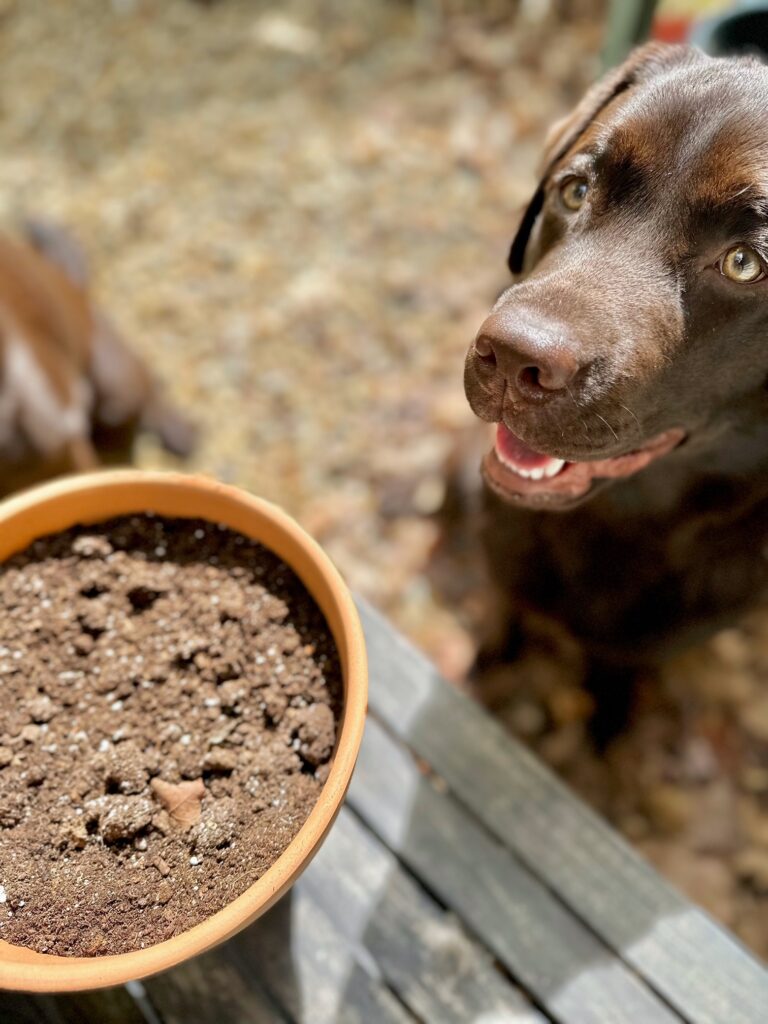
Frequently Asked Questions About The Best Soil Mix For Monstera
The best soil mix for tropical plants like Monstera deliciosa typically includes a blend of well-draining components such as perlite, coarse sand, and peat moss to prevent excess water retention and promote healthy root growth.
Brown spots on Monstera deliciosa leaves can be caused by overwatering or poor drainage. To prevent this issue, ensure your plant is potted in a well-draining soil mix and allow the top layer of soil to dry out between waterings. Additionally, avoid letting water sit on the leaves for extended periods, as this can lead to fungal issues.
Yes, incorporating sphagnum moss or pine bark into your Monstera deliciosa soil mix can help improve moisture retention and promote healthy root growth. However, it’s essential to ensure proper drainage to prevent waterlogging, which can lead to root rot. Experiment with different ratios of these components to find the right balance for your plant’s needs.
The quality of soil can impact a Monstera’s ability to withstand varying light conditions. Well-draining soil promotes healthy root growth, enabling the plant to better manage its moisture levels and tolerate different sunlight intensities. Choosing the right Monstera soil mix ensures your plant remains resilient in various lighting environments.
Yes, Monstera plants can indeed be grown hydroponically. This method involves cultivating plants without soil, instead using a water-based nutrient solution to provide essential nutrients directly to the plant’s roots. You can learn more about hydroponic growing in my Planting Hydroponic Pothos post.

Mastering the soil needs of your Monstera is crucial for its overall health and growth. By understanding the importance of well-draining soil, nutrient management, pH balance, and choosing the right soil options, you can create an optimal environment for your plant to thrive. Whether you opt for ready-made mixes or prefer crafting your own, providing the best soil mix ensures your Monstera remains happy and vibrant. So, invest in good soil, monitor your plant’s growth, and enjoy the beauty of your mature Monstera with its lush foliage and impressive aerial roots.
Thank you for visiting the blog today for, The Best Soil Mix for Monstera: Exploring DIY and Commercial Options be sure to visit my plant care page for more advice on caring for your indoor plants.
Happy Indoor Gardening!

References:
- Laughlin, S. (2022, August 29). Houseplant fertilization. Home and Garden Education Center. https://homegarden.cahnr.uconn.edu/factsheets/houseplant-fertilization ↩︎
- Photosynthesis. (n.d.). https://education.nationalgeographic.org/resource/photosynthesis/ ↩︎
- Grows, M. (2023, August 11). What is soil pH and does it really matter to plants? Maryland Grows. https://marylandgrows.umd.edu/2022/05/25/what-is-soil-ph-and-does-it-really-matter-to-plants/ ↩︎
- LECA balls. (n.d.). Elisabeth C. Miller Library. https://depts.washington.edu/hortlib/pal/leca-balls ↩︎



